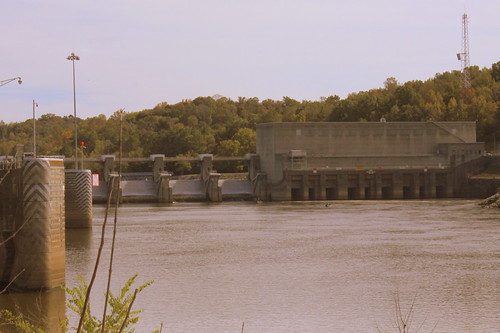
Cheatham Lock & Dam is downstream from Ashland City along the Cumberland River in Cheatham County.
From the US Army Corps of Engineers website:
www.lrn.usace.army.mil/Locations/NavigationLocks/Cumberla...
Cheatham Lock is located at Mile 148.6 on the Cumberland River in Cheatham County, Tennessee and is approximately 10 miles northwest of Ashland City, Tenn. Cheatham Lock is open to pass navigation traffic 24 hours-a-day, 365 days a year.
The 67-mile reservoir created by Cheatham Dam provides Nashville and middle Tennessee with a stable water supply and access to the entire Mississippi River system and the Intracoastal Waterway and plays an integral part in various commodities being transported to the region by water.
Cheatham Lock and Dam was authorized by Congress in 1946 as a navigation project to enhance the development of the Cumberland River Basin. Construction on the Lock was begun in 1949. Cheatham Lock was opened to navigation traffic on August of 1951. The lock chamber is 800-foot long and 110-foot wide. During normal lake levels, the lock will lift a boat 26-foot from the river below the dam to the lake above the dam. The lock releases over 17 million gallons of water each time is emptied.
Due to geological conditions in the area, the site selected for construction presented unique challenges on designing the project. This is the only lock in the Nashville District that was designed to flood; the lock walls had to be built according to the elevations of the surrounding land. Thus, create a design so that flood waters could flow over the structure with minimal damage when waters receded.
The lock has been submerged on several occasions, but the historical record-breaking flood of May 2010 submerged the lock and operations building in water almost fifteen feet deep. This far exceeded the designed limits for the structure and caused the Nashville District to perform a complete electrical overhaul and hydraulic rehab of the lock. Temporary repairs and clean-up were made and the lock was able to reopen to navigation traffic under restricted operation approximately 14 days after the waters receded. It was the middle of June 2010 before the lock returned to 24 hour operations.

No comments:
Post a Comment